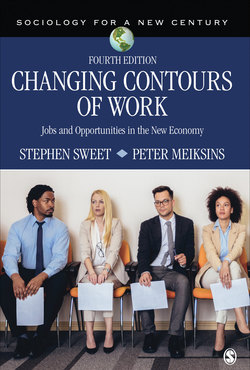Читать книгу Changing Contours of Work - Stephen Sweet - Страница 38
На сайте Литреса книга снята с продажи.
Notes
Оглавление1 The Bureau of Labor Statistics reports that in 2013, a total of 3,696,180 people were employed in computer and mathematical occupations in the United States and 11,914,590 in food preparation and serving-related occupations.
2 Economists use the terms primary, secondary, tertiary, and quaternary sectors. However, because they also use the phrases primary and secondary labor markets to describe divided opportunity structures, we use the terms extraction, processing, delivery, and service provision in accordance with the divisions identified by Kenessey (1987).
3 The original Luddites were generally portrayed as backward-looking opponents of technological change, and that is what the term “Luddite” has come to mean in the present day. However, historians have demonstrated that, while the original Luddites were hostile to new machinery, they were not simply trying to break machines but were using the threat of damaging machinery as a bargaining chip to win better wages and employment conditions from employers (Hobsbawn, 1964).
4 The United States employs a cumbersome, two-step process for union certification in which workers must first sign cards indicating their interest in forming a union, then, at a later date, vote. Under the Taft–Hartley Act, all of this must take place under the watchful bureaucratic eye of the National Labor Relations Board.
5 According to its 2018 Annual Report, General Motors employed about 173,000 people in total in 2018, with about 40% of these employed outside the United States. Recent decisions to close plants in the United States (including the Lordstown plant near Youngstown, OH) and to shift production elsewhere may increase the share of non-U.S. workers in future.
